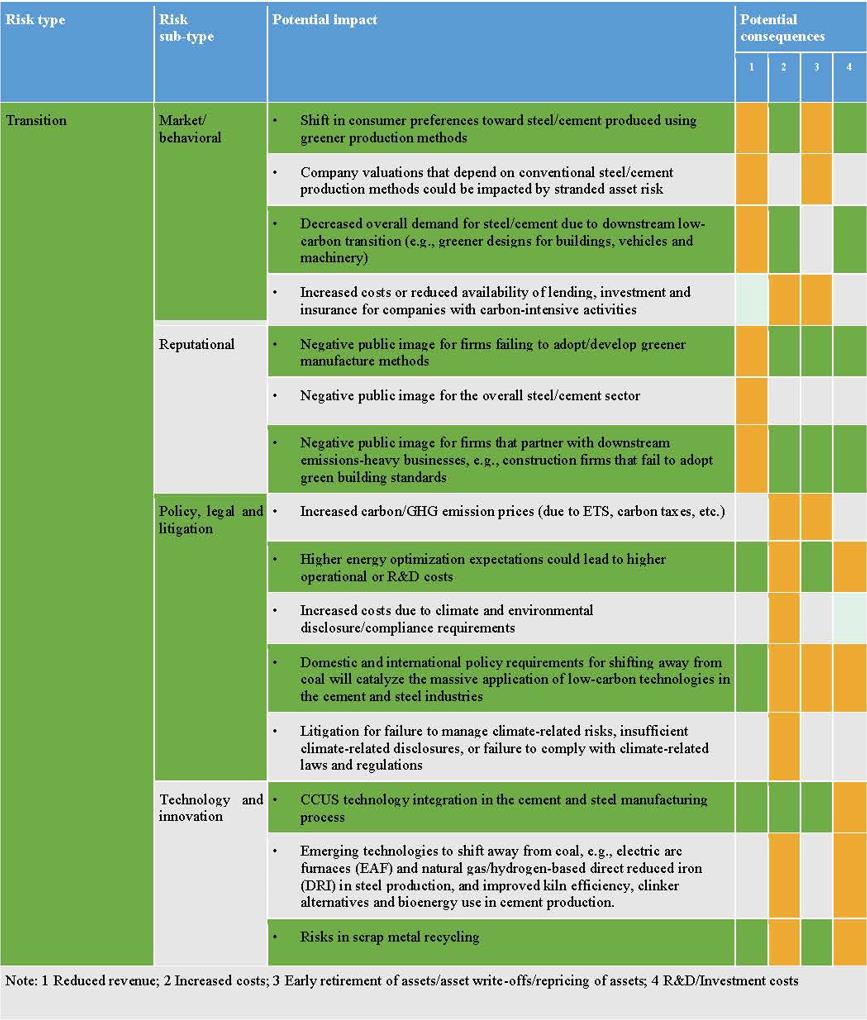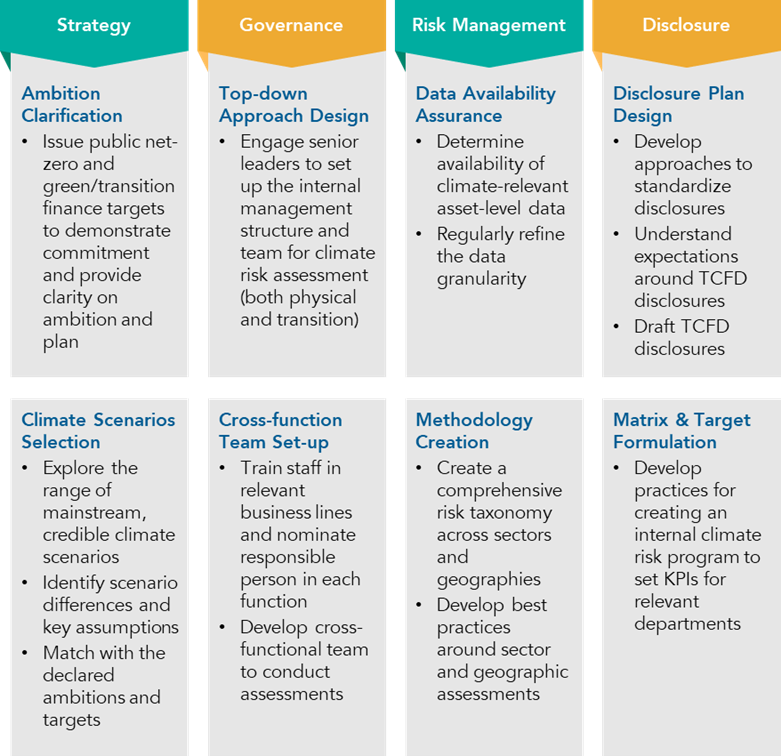GIP Launched paper of Transition Risks and Opportunities with a Focus on the Belt and Road
On 17 August 2022, the Green Investment Principles for the Belt and Road (GIP) launched the paper on Transition Risks and Opportunities with a Focus on the Belt and Road (hereinafter referred to as the paper). The Paper was a collective effort of the GIP Working Group on Environmental and Climate Risk Assessment co-chaired by the ICBC and the Swiss Re, with PwC serving as secretary. The working group delivered this report to raise awareness, disseminate best practices and advocate for robust fit-for-purpose frameworks among financial institutions and other stakeholders facing transition risks, and to scale up investment and promote risk transfer solutions for green and low-carbon activities, especially in regions and countries along the Belt and Road.
Against the backdrop of global actions in coping with climate change, transition finance plays an important role in supporting the carbon intensive sectors to embark on a green and low-carbon trajectory. According to the 2022 Annual Report of Boao Forum for Asia, 136 countries, 115 regions, 235 major cities and 682 of the 2,000 top companies around the world had set carbon neutrality goals, covering 88% of global greenhouse gas emissions, 90% of the world's economy and 85% of the world's population[1]. Achieving carbon neutrality goals will require a thoughtfully planned decarbonization roadmap to ensure an orderly transition. In order to be better prepared for a low-carbon world, businesses, both in the financial sector and the real economy, need to integrate transition risks into their business strategy and risk management practices, manage risks and create business opportunities to promote an early and orderly transition.
To map out transition risks and opportunities for financial institutions investing in countries and regions along the Belt and Road, this paper conducted case studies on selected economies, including China, Kazakhstan, Poland and Pakistan. These countries were at different levels of economic development and each faced a unique set of decarbonization challenges, but they all recognized the urgency and necessity of rapidly reducing the fossil fuel consumption and facilitating the comprehensive low-carbon transition. The essential transition risks these countries faced often include heavy reliance on fossil fuels, a lack of green investment and public-private synergy, potential long-term policy inconsistency, uncertainty of technology development, international reputation damage if target setting and implementation are perceived as insufficient, etc. On the other hand, there were numerous common or country-specific transition opportunities which could shed light on possible net-zero strategies for financial institutions and enterprises.
In addition, to understand the transition risks and opportunities in the private sector, the paper provided risk and opportunity analysis for five real economy sectors as well as for the financial sector. The five real economy sectors analyzed in the paper include energy sector, typical carbon-intensive industries (cement and steel), transportation sector, building sector, and agriculture, land & ocean use. The below table demonstrates the risk analysis for typical carbon-intensive industries in the paper.
Table 1: Risk analysis for typical carbon-intensive industries: cement and steel

As each country has its unique development and transition pathway, financial institutions must actively monitor the development of relevant policies, regulations and market conditions in the countries and regions where they have operations and/or exposure. To this end, this report proposed a four-pillar approach (Figure 1) for financial institutions to manage and control potential transition risks. The four pillars included formulating a clear strategy to support the transition of sectors in the real economy, designing appropriate governance mechanisms for top-down management oversight around climate-related risks and opportunities, risk management, and actively disclose current progress and future work plans based on a recognized disclosure framework.
Figure 1: The four-pillar approach to managing transition risks for financial institutions

Source: GIP Working Group 1 constructed based on the TCFD framework
“The transition from the traditional high-carbon development model to the green and low-carbon development pathway of countries along the Belt and Road is of great importance for the global success in coping with the climate crisis,”said Dr. Ma Jun, co-chair of the GIP Steering Committee, President of Beijing Institute of Finance and Sustainability (IFS), and Chairman of China Green Finance Committee. “The G20 Sustainable Finance Working Group (SFWG) is drafting a transition finance framework, which includes five core elements: taxonomy or principle-based approach, disclosure requirements, financial instruments, incentives and just transition, that can also be used to facilitate the development of transition finance in support of climate transition in countries along the Belt and Road.”
Martin Weymann, Head of Sustainability, Emerging, and Political Risk Management, Swiss Re, said: “In an uncertain market environment, financial institutions need to understand decarbonization pathways across industrial sectors of the real economy and re-design their product offerings to identify new low-carbon transition growth drivers while managing and mitigating the associated transition risks.”
Yin Hong, Deputy Dean, Modern Finance Research Institute of ICBC, said: “The financial sector should pay close attention to transition opportunities and risks when investing in countries along the Belt and Road. In order to contribute to the green development along the Belt and Road, financial institutions could construct sustainable risk management frameworks and provide fit-for-purpose financial services and products for enterprises.
Wu Qian, Partner, Climate & Sustainability, PwC China, said: “Actually, the financial sectors will face a variety of transition risks and opportunities because climate risks can be transformed into financial risks through different economic transmission channels. Therefore, leading financial organizations should enhance their governance and risk management to identify, assess and mitigate these risks, and then to better capture the opportunities.”
Based on the paper's discussion and findings, the GIP will continue to help its member financial institutions cope with transition risks and grasp the opportunities along the Belt and Road. Potential measures could include assessing GIP members' exposure to transition risks and their understanding of and strategies to address related opportunities, and disseminating existing management tools and best practices. As a follow-up effort to the report, the GIP has taken a deeper dive into transition risks and opportunities faced by financial institutions through a Transition Risk Survey. This survey will be conductive to inform the GIP members of their future work, including the identification of suitable pilot projects.
The report can be viewed here: Transition_Risk_Paper_.pdf
[1] 2022 Annual Report of Boao Forum for Asia on Sustainable Development in Asia and the World, Boao Forum, March 2022, http://seatone.net.cn/uploads/tan/1001.pdf